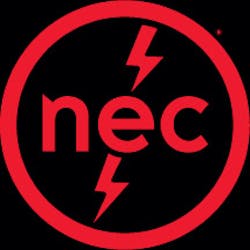NEC Rules for Pools, Tubs, Fountains, and Spas — Part 5
Article 680, Part V provides the requirements for permanently installed fountains. Some highlights include:
- Any submersible equipment used with a fountain must be GFCI-protected [680.51(A)]. But this requirement does not apply to submersible equipment that is listed for operation at low voltage contact (or less) and supplied by a power source that complies with 680.23(A)(2).
- Luminaires for fountain basins are typically designed to be water cooled, so the lens must be below the normal water level unless listed for above-water locations [680.51(C)].
- Luminaires aren't the only kinds of equipment that rely on submersion for safe operation. Protect all such equipment from overheating via a low-water cut-off or other approved means [680.51(D)].
- All metal piping systems associated with the fountain must be bonded to the equipment grounding conductor (EGC) of the branch circuit supplying the fountain [680.53]. Bonding equipment to a ground rod (instead) will create a shock hazard.
- You will find “grounding” requirements in 680.54 and 680.55. Be careful here. What is meant by “ground” is a connection to the EGC (a low impedance path to the source).
About the Author

Mark Lamendola
Mark is an expert in maintenance management, having racked up an impressive track record during his time working in the field. He also has extensive knowledge of, and practical expertise with, the National Electrical Code (NEC). Through his consulting business, he provides articles and training materials on electrical topics, specializing in making difficult subjects easy to understand and focusing on the practical aspects of electrical work.
Prior to starting his own business, Mark served as the Technical Editor on EC&M for six years, worked three years in nuclear maintenance, six years as a contract project engineer/project manager, three years as a systems engineer, and three years in plant maintenance management.
Mark earned an AAS degree from Rock Valley College, a BSEET from Columbia Pacific University, and an MBA from Lake Erie College. He’s also completed several related certifications over the years and even was formerly licensed as a Master Electrician. He is a Senior Member of the IEEE and past Chairman of the Kansas City Chapters of both the IEEE and the IEEE Computer Society. Mark also served as the program director for, a board member of, and webmaster of, the Midwest Chapter of the 7x24 Exchange. He has also held memberships with the following organizations: NETA, NFPA, International Association of Webmasters, and Institute of Certified Professional Managers.
